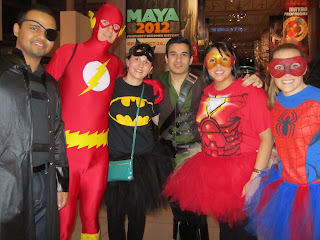Let me preface this by saying that I am NOT one of those people who whines that there’s nothing good on TV. Quite the opposite, in fact. I love TV. I think many television shows these days are inventive, have wonderful characters and plot lines, and show genuine literary and cinematic merit.
What I do NOT love is the fact that the duration of said shows are based on ratings rather than sustainable storylines. Time and time again I fall in love with a new TV series, only to have it ruined a few years later by some film exec who said “yes, let’s absolutely write a sixth and seventh season”.
Why do they do this? Why do they insist on ruining wonderful shows by keeping them on too long? The answer, of course, is money. If a series is doing well and the ratings are high, there’s no way they’ll pull the plug, even if they've run out of fresh material.
Which is exactly the disappointment I recently faced when watching what was once one of my most anticipated television shows – Bones. It was one of those series I looked forward to every week. Until last year, that is, when the show that I once adored finally ran out of steam. I trudged along, hoping it would get better until it got so terrible that I finally had to admit defeat. But what’s really disturbing is that in a month or so it’s going to begin airing again, beginning its eight season. Never mind that the plots have become ridiculous and the characters stilted – people keep watching so the executives keep ordering more episodes.
The same could be said of many other shows I once loved. The Office. 24. Even Joss Whedon’s Buffy the Vampire Slayer – the beloved show of my childhood. Though it remains one of my favorite series to this day, I will never understand why they felt the need to make seven seasons. They really should have stopped after three of four. The only thing that consoles me about Fox’s premature cancellation of Firefly , Whedon’s later masterpiece, is that they never got the chance to run it into the ground with too many seasons.
Perhaps that’s why at the end of the day, no matter how much I love certain TV shows, I love movies more. There’s a certain conciseness about film that I find reassuring. Movies have a beginning AND an end, rather than this endless stream of cliffhangers we see with TV. Though of course there are certain film franchises that make the same mistakes as their television counterparts and produce too many sequels (to the detriment of artistic integrity) – that's right George Lucas, I’m talking to you – in general film is a little more conscious of quitting while ahead.
Thought I must admit, I’ve become a bit concerned with the number of sequels, threequels and prequels being made these days . . .
Let me say one more thing on the subject of over-producing before I end my little rant here. I’ve been incredibly concerned with people’s interest in the continuation of J. K. Rowling’s Harry Potter series. I constantly hear people saying things like “when is she going to write the next book?” and “I’d love to see what Harry’s like when he’s all grown up and working for the ministry”. To which I respond – ARE YOU SERIOUS?
The seven Harry Potter books are some of the best young adult literature I’ve ever come across. THE best, if I’m being honest. It’s an epic, seven-part tale that should NOT be tampered with. There’s no way the series can ever be better than it already is, and to try to expand on it is to risk diluting that which is already perfect.
So please, think really hard before you ask for another book, another season, or another sequel. Because these days, you might just get what you wish for.




















.JPG)




.JPG)
